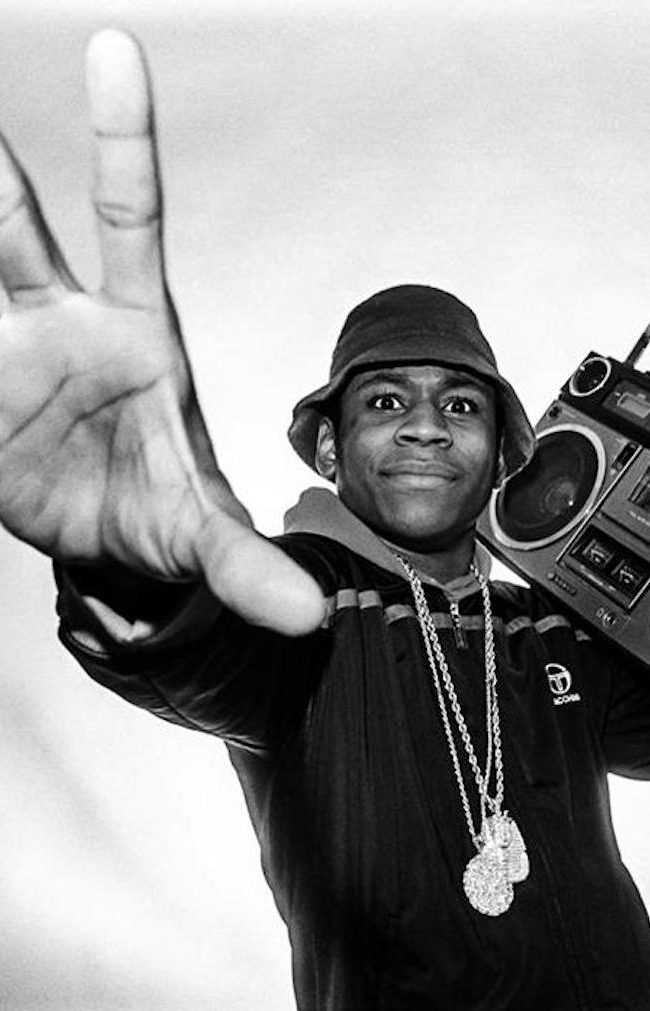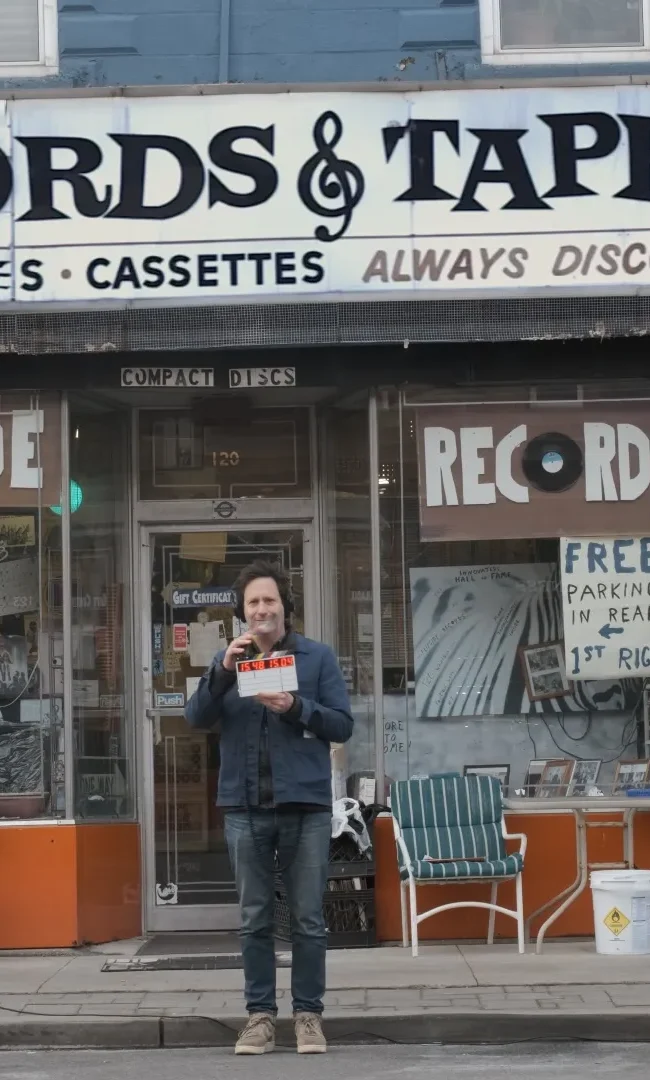A Conversation with Deia Schlosberg (STORY OF PLASTIC)
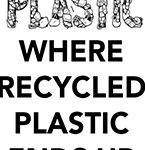 I met with director Deia Schlosberg (Cold Love), on Saturday, November 9, 2019, at DOC NYC, to discuss her new documentary The Story of Plastic (which I also reviewed). In it, she examines the rapidly increasing dangers posed by our over-reliance on plastic. It’s doom and gloom out there, folks, our last gasp emerging, in a choking whisper, through the strands of non-recycled petroleum-based products that clog our planet. This is no joke, and we need to act. Remember that the first step of confronting addiction is to admit its existence in the first place. Thanks to Schlosberg, we can at least identify what ails us. Here is a condensed digest of our conversation, edited for length and clarity.
I met with director Deia Schlosberg (Cold Love), on Saturday, November 9, 2019, at DOC NYC, to discuss her new documentary The Story of Plastic (which I also reviewed). In it, she examines the rapidly increasing dangers posed by our over-reliance on plastic. It’s doom and gloom out there, folks, our last gasp emerging, in a choking whisper, through the strands of non-recycled petroleum-based products that clog our planet. This is no joke, and we need to act. Remember that the first step of confronting addiction is to admit its existence in the first place. Thanks to Schlosberg, we can at least identify what ails us. Here is a condensed digest of our conversation, edited for length and clarity.
Hammer to Nail: Deia, what initially drew you to this particular topic?
Deia Schlosberg: All the films I do are in one way or another related to climate and environmental issues, and human rights issues. Environmental justice is the story I feel the need to tell most urgently. This falls squarely in that realm. It wasn’t until I really started working on the project that I realized just how connected to the other films that I’ve made it is.
HtN: There was a prodigious amount of research on display in what is a globe-trotting film. It’s very impressive. What kind of research team did you have, if at all? Or is it all just you discovering, as you go, and adding another layer?
DS: Prodigious is a good word for it. We knew it’d be heavily scrutinized, and wanted to make sure that we had all of our I’s dotted and such. Every fact that’s in the film, we have a reference for. If we could do citations and footnotes, the whole film would be backed up. The team that I worked with on it included a couple of people, Stiv Wilson and Megan Ponder, that have been in the plastics world for many years, and have both worked on legislation and city ordinance kind of work. They’ve just been steeped in all of the minutiae of the plastic industry. They’re super familiar with all the nitty gritty of it. Megan did a lot of research and fact checking as the editors and I were putting everything together. Everything we put in there, we made sure it was backed up.
HtN: Tell me about The Story of Stuff Project, which is the advocacy group behind the film.
DS: They’re a nonprofit based in Berkeley, California. The Story of Stuff was originally a mostly animated short film that came out in 2007, with Annie Leonard. She’s explaining the cycle of consumption in front of really great animations. Before virality was really a thing online that film kind of went viral. I used to teach environmental education and I used that in classes and syllabi all the time. And over the years they released a lot of other short films of a similar vein. This was their first foray into live-action and feature-length.
HtN: Can you tell me a little bit more about that background in teaching before you became a filmmaker?
DS: Yeah, in undergrad I studied earth and planetary science and visual communications, and did lot of animation work and stories that…I was trying to bridge the sciences and the arts. It wasn’t until in my late twenties that I realized, “Oh, filmmaking is that, perfectly.” Because up until that point I had kind of been having these parallel careers of environmental education, and then design and illustration, kind of doing both things but not really combining them as much as I wanted to. I realized that doc filmmaking had been what I wanted to do the whole time without allowing myself to think of that as a possibility.
HtN: Right. That’s great! You get to combine your two passions.
DS: Yeah.
HtN: Although the subject matters you choose must be draining.
DS: Yeah.
HtN: I sometimes have to pace myself as a viewer and a critic. How many films can I watch that may be great films but that remind me how much we’re in trouble.
DS: Absolutely.
HtN: Kudos to you.
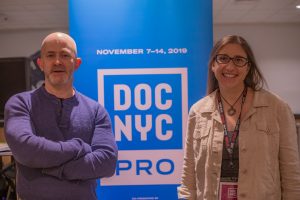
Lead critic Chris Reed and filmmaker Deia Schlosberg
DS: Thanks.
HtN: What do you hope will happen, in terms of the call to action that you have at the end of your film? You have a website address at the end of the film. What do you hope people will do after watching? It’s difficult to abandon plastic. I noticed it today as I was wiping my hands on the train to New York after eating. I had a little sachet packet with my Purell wipe, and I’m like, “That’s terrible.” Obviously, we should be conscious, but what do you hope people will do most directly after watching your film?
DS: What is wonderful about this film and everything that went into it is there’s a global movement that is really excited to use this film as a tool, the Break Free From Plastic Movement. It’s over 1,500 organizations all over the world that all have different calls to action depending on where they are, and what the most pressing issue is around them that they’re working on, that’s all part of this global resistance to more petrochemical development.
In the Philippines, there’s an amazing move towards zero-waste cities and the Break Free From Plastic groups there are focusing their efforts on establishing more zero-waste cities and communities. Whereas in the US Gulf Coast, the organizations working there are more environmental justice-focused frontline communities that are having all sorts of serious health impacts from being so close to the manufacturing process and production process. They’re working to empower communities to fight back and enforce regulation and monitoring. Everywhere that it screens we hope to work with whatever local organization there is and have them really take charge and be able to use this film as a rallying point to get more people involved in their efforts.
HtN: One of the things I admire about your film, beyond its message and the coherent way that you put together your call to action, depressing as the state of the world may be, is that it’s really beautifully photographed and you do have these very fine animations. You have a background in design. How did you assemble the crew for that? You mentioned Stiv and Megan, but beyond them, how did you get the rest of your crew together?
DS: Ruben Deluna, who does the animations, has been the visual side of everything Story of Stuff has done, from their font to all their outreach materials, starting with the original animation with Annie. It has been Ruben’s drawings and animations. It was really exciting to work with him in this process. I don’t know that he’s done a whole lot of feature work. He does lots of different stuff, mostly shorter. It was a really cool process to develop with him, and have a lot of back and forth and really honing in on … every single second of animation is 20 different decisions. It was really fun to go through that process with him.
HtN: And that animation that he did includes the timeline that you have going through your film as well? Because you have this timeline that you return to in order to illustrate, in really clear visual terms, the role of industry in all of this, including the recycling movement of the 1970s. That was his?
DS: No, that’s me. His look is pretty distinctive. As in every film, if you have more time and money there’s more you want to do with it. We had talked about working in his style for all of that as well, but there are just limitations of reality.
HtN: Well, if everything is of a particular heightened aesthetic, then maybe that’s too much sometimes, as well.
DS: Yeah, that’s true.
HtN: I’ve seen films that go overboard with that. The timeline works as it is, simple. I was just curious.
DS: Yeah, thanks. Then the two editors, Tony Hale and Brian Wilson, were phenomenal. I hadn’t worked with them directly before, but have have known them for years through other filmmakers that have worked with them and a lot of mutual friends. It was a complete joy to finally work with them on a project. Then, in the field, Melissa Lesh did a lot of the cinematography with me, and we’re working on another big project together, as well. She was born in India and speaks Hindi fluently, so she was a really easy, natural choice for that first shoot. Then our team dynamic worked so well that we just stayed, the four of us, a crew throughout most of the international shoots.
HtN: I must admit, speaking of crew, that when I saw the names Brian Wilson and Tony Hale in your crew list, I was like, “Really?”
DS: (laughs) Yeah. Different Brian Wilson, different Tony Hale.
HtN: (laughs) That would have been an interesting story in and of itself.
DS: (laughs) Totally.
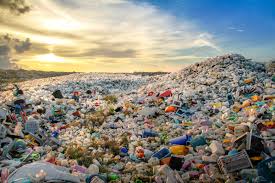
A shot from THE STORY OF PLASTIC
HtN: Unless I’m missing something, I believe that what industry voices you have in your film are all from other material.
DS: Yeah.
HtN: Did you try to reach out to any industry reps to get their voices as direct sources in the film? Or did you just decide, since you already had that material, to use them in that way?
DS: Yeah. We decided…I mean, they have a bottomless PR budget. That includes all these conferences that they were speaking at where they’re talking to shareholders, where they’re talking to other members of the industry, and they’re saying exactly what they want to be saying. They’re putting the message out there that they want to be putting out there. We just put that out there as their message, because that’s what they chose to have be their message. We really wanted to give a voice to people that don’t have that sort of platform all the time. We focused all of our energy, and budget and efforts to raise those other voices.
HtN: That makes sense, because if you’re going to interview a PR flack on camera, it’s not like they’re going to say something different.
DS: Exactly.
HtN: Or they’ll lose their job.
DS: All these messages are so honed and pre-crafted.
HtN: I’m curious, and I don’t know how much you can talk about it, but I did read that you, filming one of these projects of yours, were arrested.
DS: Yeah.
HtN: How are you doing with that and what is your legal jeopardy now, if at all?
DS: I’m free and clear as far as North Dakota is concerned. I had two felony charges and a misdemeanor charge, all conspiracy. It happened three years ago. I was filming the Shut it Down action that actually closed all of the valves on all five pipelines bringing Canadian tar sands into the US. Five different activists in five states coordinated their efforts. I was filming the shutdown of the Keystone Pipeline in North Dakota when I was arrested with the activist and held in jail for a few days and received those charges.
It took about a year for them to finally be dropped. I had amazing support from the journalism community and the documentary community. I had amazing pro bono lawyers, civil rights lawyers that came on to help and were incredible. The charges were supposed to be dropped … “with prejudice”? I always get it mixed up because it’s counterintuitive. But basically it means that it’s disappeared from my record.
But it’s still on my record, actually. In the lead up to this project I thought it might be an issue, all the international travel, and really wanted to get everything going as smoothly as possible. I went and applied for Global Entry status, just to be sure that I was all in the clear. Even though at that point my record was supposed to be totally wiped, I went in for the interview for that and they were like, “So, tell me about this arrest.” Apparently, it is indeed still on my record in some form or another.
HtN: Were you approved for Global Entry?
DS: I was.
HtN: Good. I have it too. It’s awfully convenient.
DS: It really is. Oh my gosh. With all the equipment we were traveling with, too!
HtN: I bet.
DS: It would have been a total nightmare without it.
HtN: Well, congratulations on having that, more or less, sort of expunged from your record.
DS: Thank you.
HtN: And keep on doing what you’re doing!
DS: Thank you very much!
– Christopher Llewellyn Reed (@ChrisReedFilm)
Like what you see here on Hammer to Nail? Why not pay just $1.00 per month via Patreon to help keep us going?








